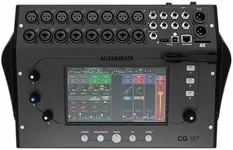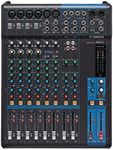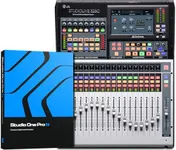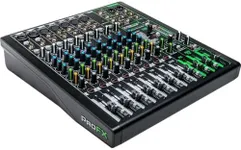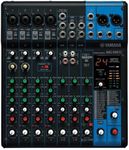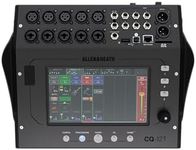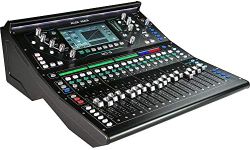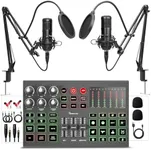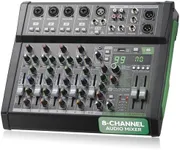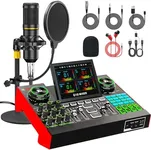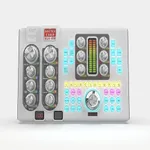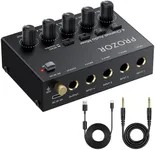Buying Guide for the Best Small Audio Mixers
Choosing the right small audio mixer can significantly enhance your audio production, whether you're a podcaster, musician, or live sound engineer. The key is to understand your specific needs and how different features of audio mixers can meet those needs. Here are some important specifications to consider when selecting a small audio mixer.Number of ChannelsThe number of channels on an audio mixer determines how many audio sources you can connect and control simultaneously. This is important because it dictates the mixer's capacity to handle multiple inputs like microphones, instruments, and other audio devices. Mixers with 4-8 channels are suitable for solo performers or small bands, while those with 12-16 channels are better for larger setups or more complex productions. Choose a mixer with enough channels to accommodate your current and potential future needs.
Input TypesAudio mixers come with different types of inputs, such as XLR, 1/4-inch, and RCA. XLR inputs are typically used for microphones and provide balanced audio, which reduces noise and interference. 1/4-inch inputs are common for instruments like guitars and keyboards, while RCA inputs are often used for consumer audio devices. It's important to choose a mixer that has the right combination of input types for your equipment. If you primarily use microphones, ensure there are enough XLR inputs. For instruments, look for sufficient 1/4-inch inputs.
Built-in EffectsSome audio mixers come with built-in effects like reverb, delay, and equalization. These effects can enhance your audio production by adding depth and character to your sound. If you want to add effects without needing external processors, look for a mixer with a variety of built-in effects. However, if you prefer to use external effects units or software, this feature may be less important. Consider your workflow and whether built-in effects will be beneficial for your projects.
Phantom PowerPhantom power is a feature that supplies power to condenser microphones, which require an external power source to operate. This is important if you plan to use condenser mics, as they are often preferred for their sensitivity and sound quality. Mixers with phantom power typically have a switch to activate it on specific channels. If you use or plan to use condenser microphones, ensure your mixer has phantom power capabilities.
USB ConnectivityUSB connectivity allows you to connect your mixer directly to a computer for recording or streaming audio. This is particularly useful for podcasters, home studio owners, and live streamers. Mixers with USB outputs can send audio directly to your computer, making it easier to record and edit your sessions. If you need to integrate your mixer with a digital audio workstation (DAW) or stream live content, look for a mixer with USB connectivity.
Size and PortabilityThe physical size and portability of a mixer are important considerations, especially if you need to transport it frequently. Smaller mixers are easier to carry and set up, making them ideal for mobile recording or live performances. However, they may have fewer features and inputs compared to larger models. Consider how often you'll need to move your mixer and whether a compact design will meet your needs without sacrificing essential features.
